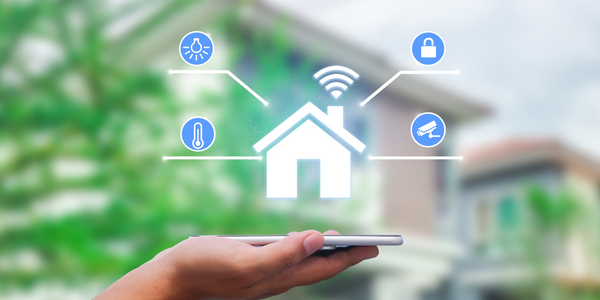Technology Category
- Networks & Connectivity - 5G
- Platform as a Service (PaaS) - Application Development Platforms
Applicable Industries
- Buildings
- Cement
Applicable Functions
- Facility Management
- Sales & Marketing
Use Cases
- Building Automation & Control
- Inventory Management
Services
- System Integration
About The Customer
Home From Home is a serviced apartments property management company based in South Africa. The company was founded by Charles Bloem in response to the demand for alternative accommodation options during the 2010 World Cup. Home From Home offers rentals in Cape Town and several other locations across South Africa. The company's model is similar to hotels, and they initially used a hotel management software to facilitate their operations and process reservations from major channels. However, they wanted to expand into the Airbnb market and needed a solution that could handle the unique demands of managing short-term rental listings.
The Challenge
Home From Home, a South African property management company, was facing a significant challenge in managing their rapidly growing number of listings. The company had grown from 20 to 450 listings in a few years, with as many as 100 listings in one building. They were using a hotel management software to facilitate their operations and process reservations from major channels like Booking.com, Agoda, and Expedia. However, they wanted to tap into the Airbnb market, which was gaining significant momentum. Their existing hotel management software could not support Airbnb, a channel exclusively for short-term rentals. This meant that every time a reservation came in, they had to manually update both their Airbnb calendar and the calendar on their management software to avoid double bookings. With an annual occupancy rate of 80% and more than 90,000 reservations a year, this was a time-consuming and error-prone process, leading to multiple double bookings and lost time in crisis management.
The Solution
Home From Home turned to Guesty, a property management software that could automatically sync their bookings across all their channels, including Airbnb. Guesty’s Unified Inbox and auto-messaging tools allowed them to answer all guest inquiries from a single platform and automate communication, significantly improving their guests’ experience and boosting engagement. They also started using the Owners Portal, which provided their clients with all relevant information about their properties and allowed them to make reservations. Guesty also enabled them to group similar units in the same building and market them collectively as a “room type” rather than unique listings. The Multi-Calendar feature allowed them to automatically sync all of their reservations, saving them hours per day and preventing accidental double bookings.
Operational Impact
Quantitative Benefit

Case Study missing?
Start adding your own!
Register with your work email and create a new case study profile for your business.
Related Case Studies.

Case Study
System 800xA at Indian Cement Plants
Chettinad Cement recognized that further efficiencies could be achieved in its cement manufacturing process. It looked to investing in comprehensive operational and control technologies to manage and derive productivity and energy efficiency gains from the assets on Line 2, their second plant in India.

Case Study
Energy Saving & Power Monitoring System
Recently a university in Taiwan was experiencing dramatic power usage increases due to its growing number of campus buildings and students. Aiming to analyze their power consumption and increase their power efficiency across 52 buildings, the university wanted to build a power management system utilizing web-based hardware and software. With these goals in mind, they contacted Advantech to help them develop their system and provide them with the means to save energy in the years to come.

Case Study
Intelligent Building Automation System and Energy Saving Solution
One of the most difficult problems facing the world is conserving energy in buildings. However, it is not easy to have a cost-effective solution to reduce energy usage in a building. One solution for saving energy is to implement an intelligent building automation system (BAS) which can be controlled according to its schedule. In Indonesia a large university with a five floor building and 22 classrooms wanted to save the amount of energy being used.

Case Study
Powering Smart Home Automation solutions with IoT for Energy conservation
Many industry leaders that offer Smart Energy Management products & solutions face challenges including:How to build a scalable platform that can automatically scale-up to on-board ‘n’ number of Smart home devicesData security, solution availability, and reliability are the other critical factors to deal withHow to create a robust common IoT platform that handles any kind of smart devicesHow to enable data management capabilities that would help in intelligent decision-making

Case Study
Protecting a Stadium from Hazardous Materials Using IoT2cell's Mobility Platform
There was a need for higher security at the AT&T Stadium during the NFL draft. There was a need to ensure that nuclear radiation material was not smuggled inside the stadium. Hazmat materials could often be missed in a standard checkpoint when gaining entry into a stadium.








